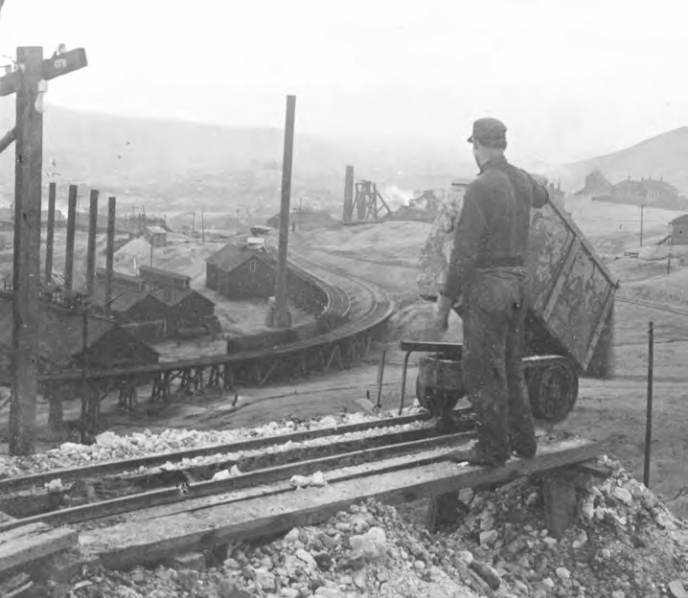Basic HTML Version


winter
|
spr ing
29
drove them to Virginia City, Montana. According to A.D. Hopkins,
who wrote “Montana Midas” for the
Las Vegas Review-Journal
, Clark’s
greatest profit was with eggs. Hopkins quotes Clark as saying, “I
bought case after case. I knew they would be frozen but they were
suitable for making Tom & Jerrys,” a favorite drink in Montana
saloons. His eggs sold for $3 a dozen at a time when miners averaged
$4 a day.
Clark continued to provide the miners with services that included
filing claims, making loans, and selling supplies through his mercantile
business. By 1870, he had married his childhood sweetheart, Catherine
(Kate) Stauffer of Pennsylvania, and established himself as a grocer and
banker in Deer Lodge, Montana. Later, he gravitated to Butte and began
to acquire mine-related businesses as well as mines. When the surface
gold was exhausted, Butte miners turned to gold locked in quartz but the
only mill to process it went bankrupt. Clark obtained the mill and made a
fortune, partly because his control over the price of milling made his own
mines more profitable. When the gold and silver wore out, copper became
the ore of choice.
Clark’s fortune was on the rise but competition arrived in 1880
when Irish-born Marcus Daly arrived on the scene. Backed by
mining magnate George Hearst, he soon established the Anaconda
Copper Company. Clark was determined to retain control of Butte’s
business, however, and bought up all the water rights so that Daly
could not establish his own smelter. In so doing, he created an
implacable enemy.
Butte
With his fortune secure, Clark set about building himself a grand
home, which was completed in 1888. His 30-room “modern Elizabethan”
mansion was an exuberant expression of Victorian Age excessive
ornamentation. The exterior was a mason’s sampler of brick, sandstone,
Montana brownstone, terra cotta, and slate. Inside, marquetry floors of
various designs, fireplaces, and frescoed ceilings and walls adorned the large
common rooms. The parlor was octagonal in shape, the cellar housed the
wine, and the 3
rd
floor housed the servants as well as an elaborate frescoed
ballroom lighted by a bay dormer and gas chandeliers. Around 1910, Clark
installed an enormous pipe organ of 825 pipes in the south corner of the
ballroom. (Today, Clark’s former home is the beautifully restored Copper
King Mansion, a Bed and Breakfast which also offers public tours.)
Like the lords of feudal estates, Clark felt responsible for the welfare of
Marcus Daly and William Andrews Clark fought for control of the “Mines on the Hill” in
Butte, Montana, seen here in 1905 (Courtesy of Library of Congress)

